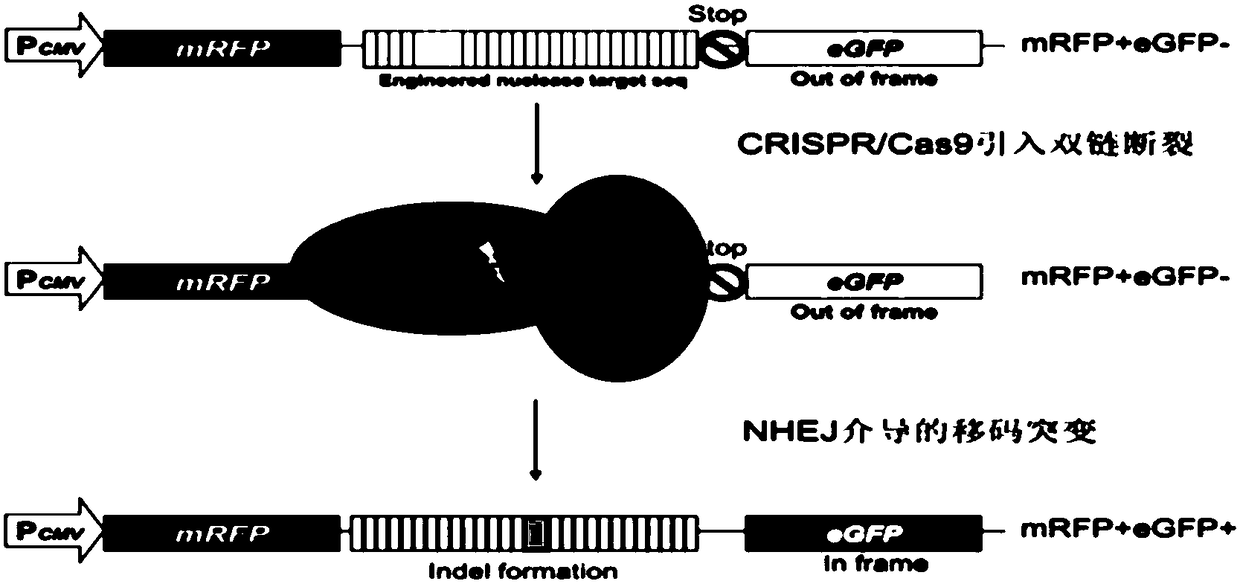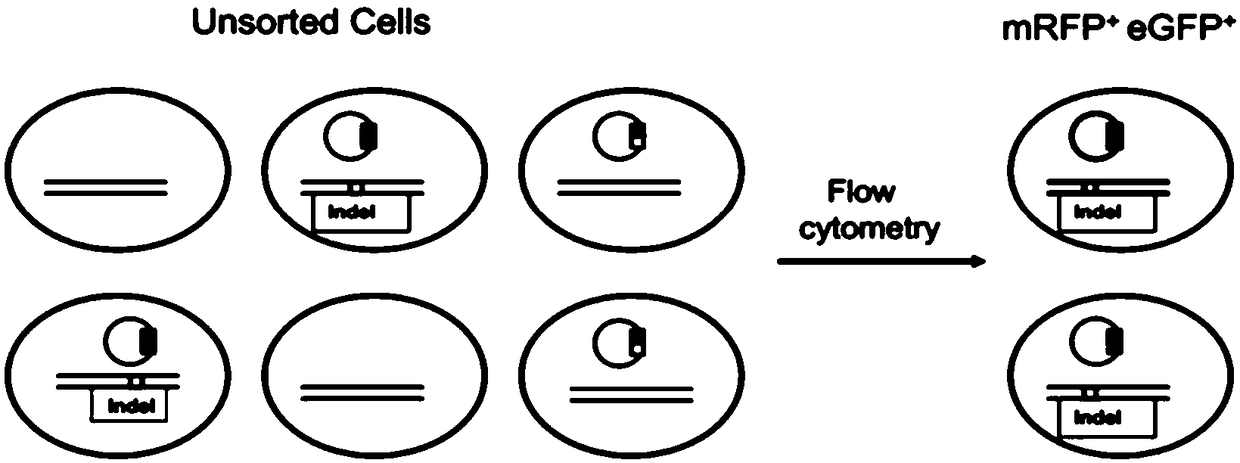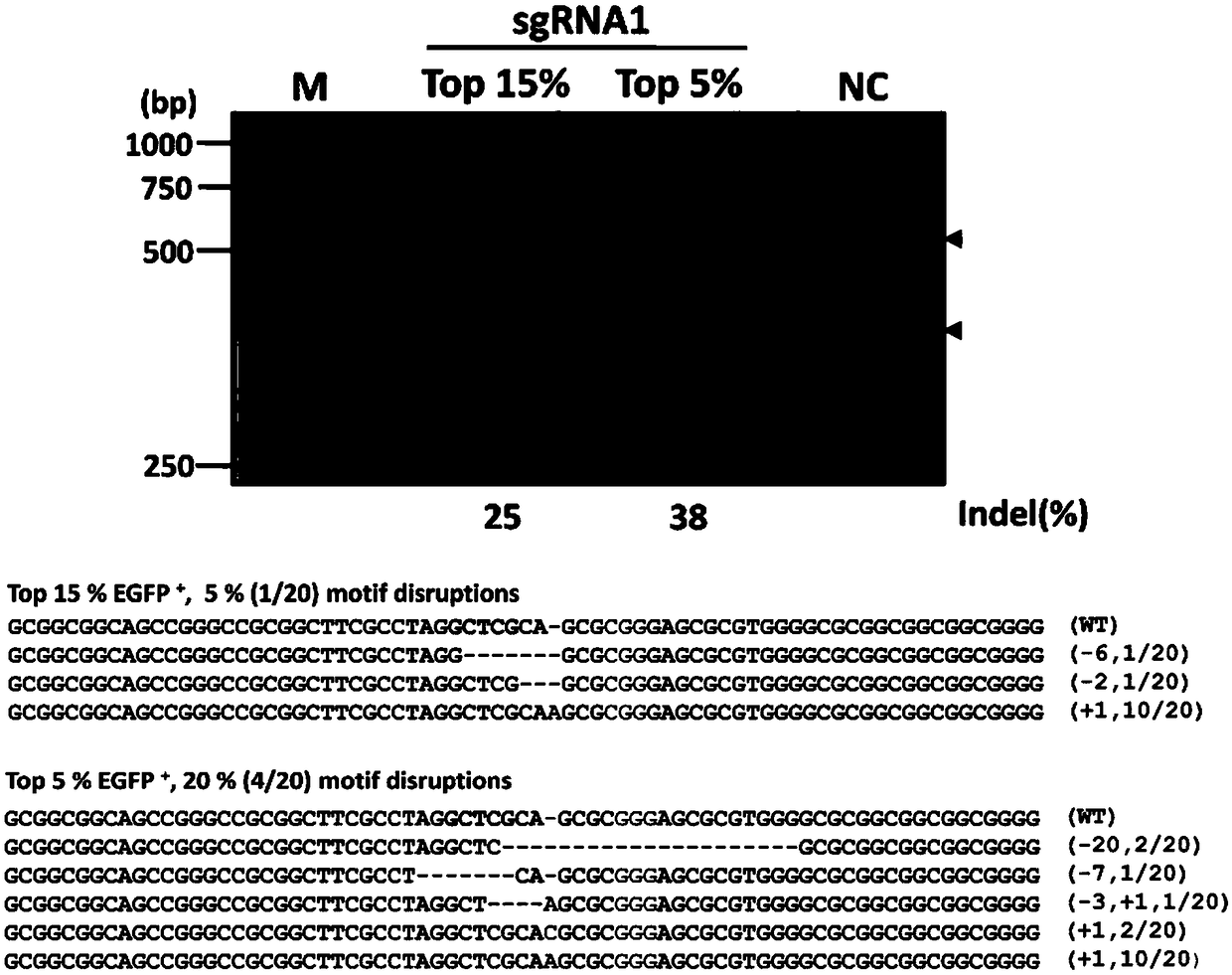Method for increasing pork yield by CRISPR/Cas9
A technology for meat production and floret pigs, applied in the field of genetic engineering, can solve the problems of germplasm genetic characteristics without high lean meat rate, slow increase in lean meat rate, and long measurement cycle, so as to avoid biosafety risks and improve lean meat. Meat rate, increased production and yield effects
- Summary
- Abstract
- Description
- Claims
- Application Information
AI Technical Summary
Problems solved by technology
Method used
Image
Examples
Embodiment
[0028] 1. IGF2 gene target site selection
[0029] According to the IGF2 gene sequence and the basic design principles of sgRNA (the sequence conforms to 5'-GN19NGG-3'), and with the help of software analysis (http: / / crispr.mit.edu / ), a sgRNA targeting porcine IGF2 gene was designed. See Table 1 for the specific sequence.
[0030] Table 1 Sequence information of gRNA targeting IGF2 gene
[0031]
[0032] Note: PAM (protospacer-adjacent motif) refers to the sgRNA binding motif
[0033] 2. Construction of porcine IGF2 gene sgRNA / Cas9 targeting vector
[0034] The pX330 vector can simultaneously express sgRNA and codon-optimized human Cas9 protein.
[0035] According to the two sgRNAs designed above, the corresponding positive and negative single strands of oligonucleotides were synthesized, and corresponding BbsI sticky ends were added to each single strand. Digest 1 μg of the pX330 vector with BbsI, and after electrophoresis of the linearized plasmid, recover the digeste...
PUM
 Login to View More
Login to View More Abstract
Description
Claims
Application Information
 Login to View More
Login to View More - R&D
- Intellectual Property
- Life Sciences
- Materials
- Tech Scout
- Unparalleled Data Quality
- Higher Quality Content
- 60% Fewer Hallucinations
Browse by: Latest US Patents, China's latest patents, Technical Efficacy Thesaurus, Application Domain, Technology Topic, Popular Technical Reports.
© 2025 PatSnap. All rights reserved.Legal|Privacy policy|Modern Slavery Act Transparency Statement|Sitemap|About US| Contact US: help@patsnap.com



